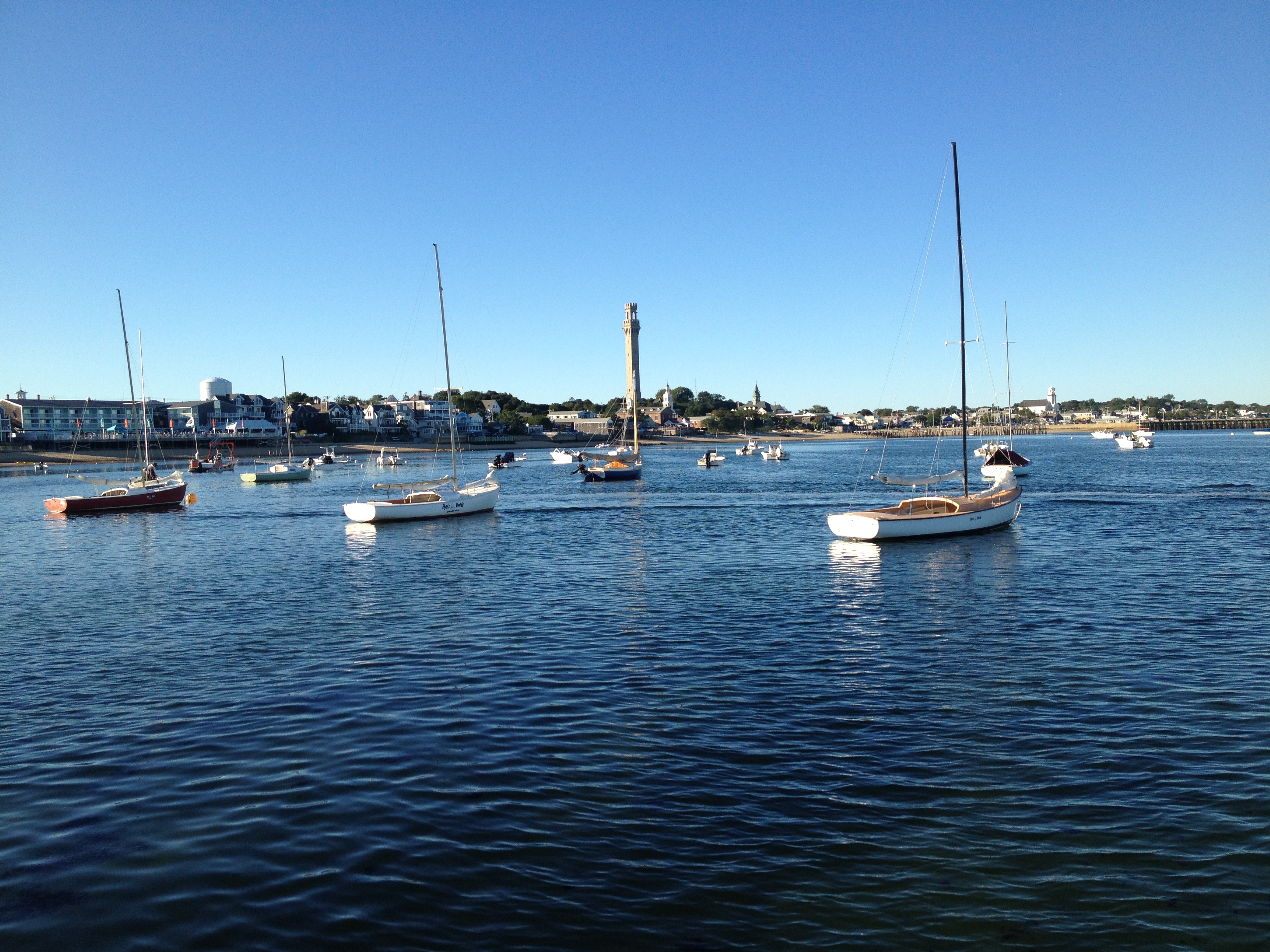
Provincetown, Massachusetts on Cape Cod makes a great day trip or overnight trip from Boston Harbor- provided you have good weather, patience and a large enough boat to handle the open water. The latter consideration is really the captain’s call as to what constitutes large enough. In my previous boat, a 19 foot center console, I was not confident enough to make the trip all the way across to Provincetown. With the 28′ I have more than enough confidence to bring the entire family.
I set out for Provincetown yesterday in the early afternoon. We had not yet made the trip down this season, so a day trip was in order. Yesterday (8/29) was a perfect day – land weather wise. Sea weather? not so much. With the cold front that brought in this deep blue sky, cooler temperatures and dry, crisp air came a hard wind out of the Northeast that kicked up some five foot swells. Luckily, the wind action was largely in the morning, and, as typically happens as a front moves through, winds die down throughout the day. Tightly spaced white caps relax into long, drawn out swells as if someone had taken a rolling pin to them and pushed them out. The latter is much easier to navigate in.
I left Point Allerton in Hull at 12:45 PM and was in Provincetown Harbor by 2:30 PM. This is a decent trip time given the rough seas. At one point, about five miles off Race Point in very open water, the swells got big enough that I had to pull up the trim tabs fully to keep the boat from burying the bow and listing. Quartering big swells can be very effective if you do it right and don’t go too fast. From Allerton Point, I placed a waypoint on Race Point at Provicetown, and made a route from there. This route had me passing Minot light within 15 minutes, and being due East of the Scituate Driftway ten minutes after that (the Driftway is now easy to spot with the huge new windmill). There is about another 20 minutes from here when all one can see is the Scituate/Marshfield coast behind them until the Standish Monument at Provincetown emerges from the horizon. On most days, a boater will not lose sight of land during this trip.
Below is a visual of my GPS with my position as I approached Race Point. As you can see, I deviated to the SE of my course due to heavy seas:

Rounding Long Point, with the lighthouse in the background:
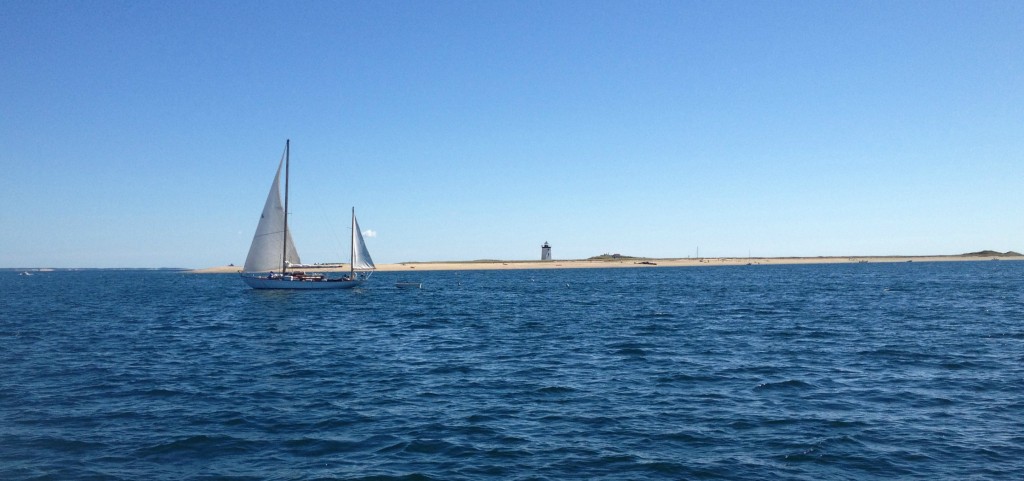
When we got to Provincetown, I called Flyer’s ,which operates the mooring field. Because we were only tying up for a few hours, this was a better option than a transient slip (which we did last year when we were staying overnight). Flyer’s charges $20 for a mooring for the day- I think this is a great deal if you don’t need water and power at a slip. For those looking to stay overnight, I would recommend the Provincetown Marina.
Successfully tied onto a mooring on Provincetown Harbor:
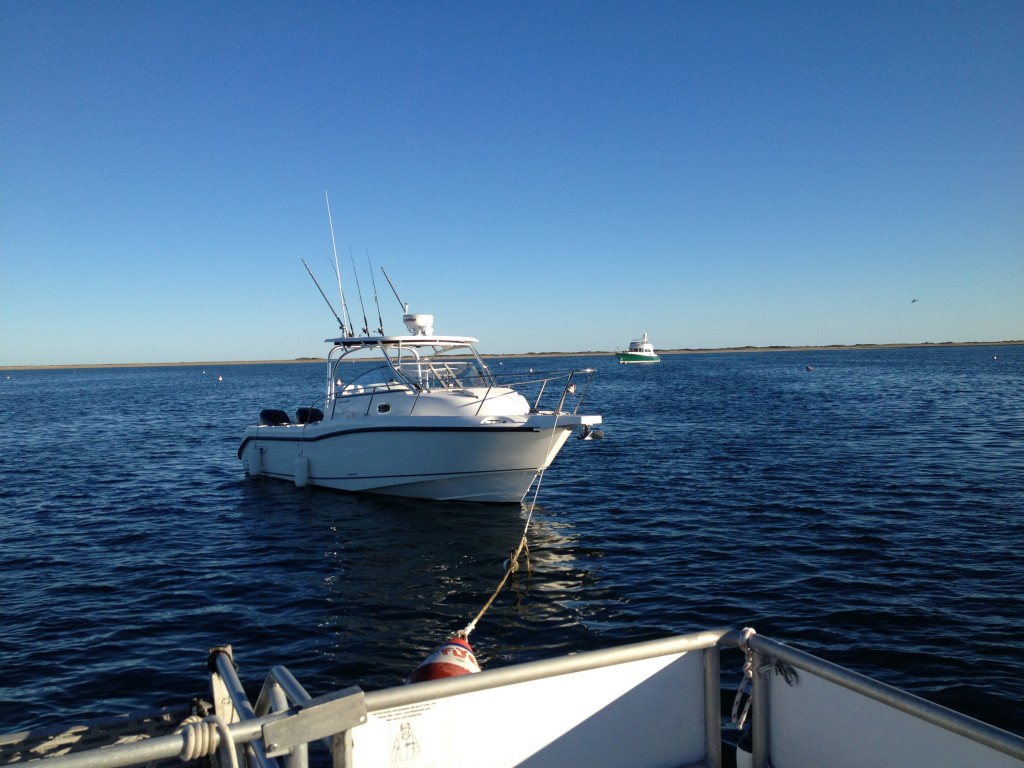
View from the pier at Flyer’s:
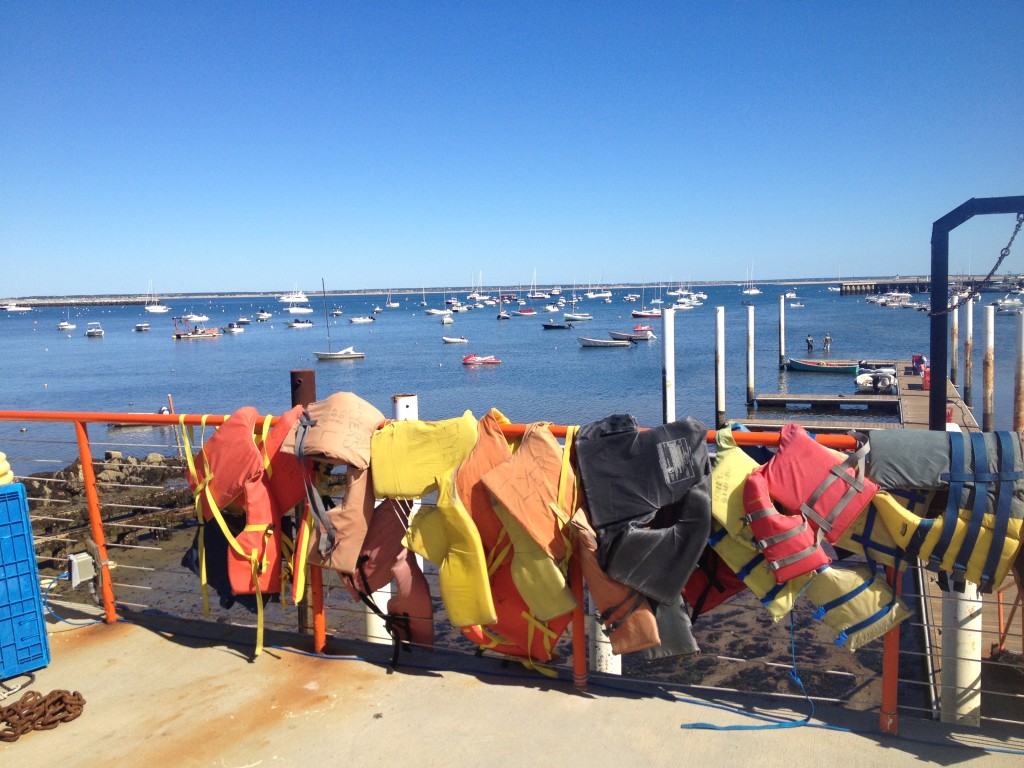
The bike trail through the Provincelands, where one can bike through secluded sandy dunes, with a spectacular distant ocean view in three directions:
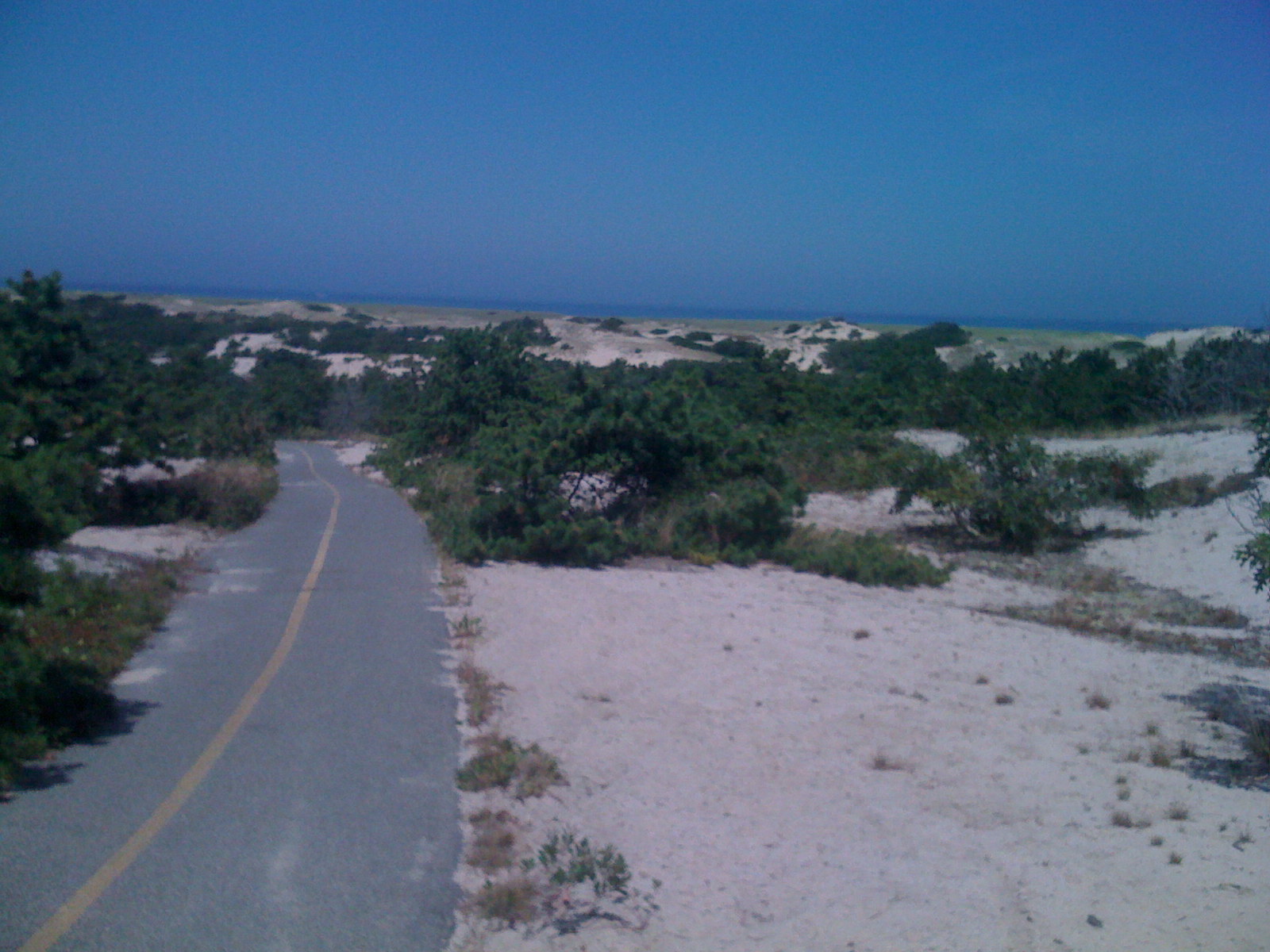
A blue sky day reflected well behind the downtown Provincetown landscape:
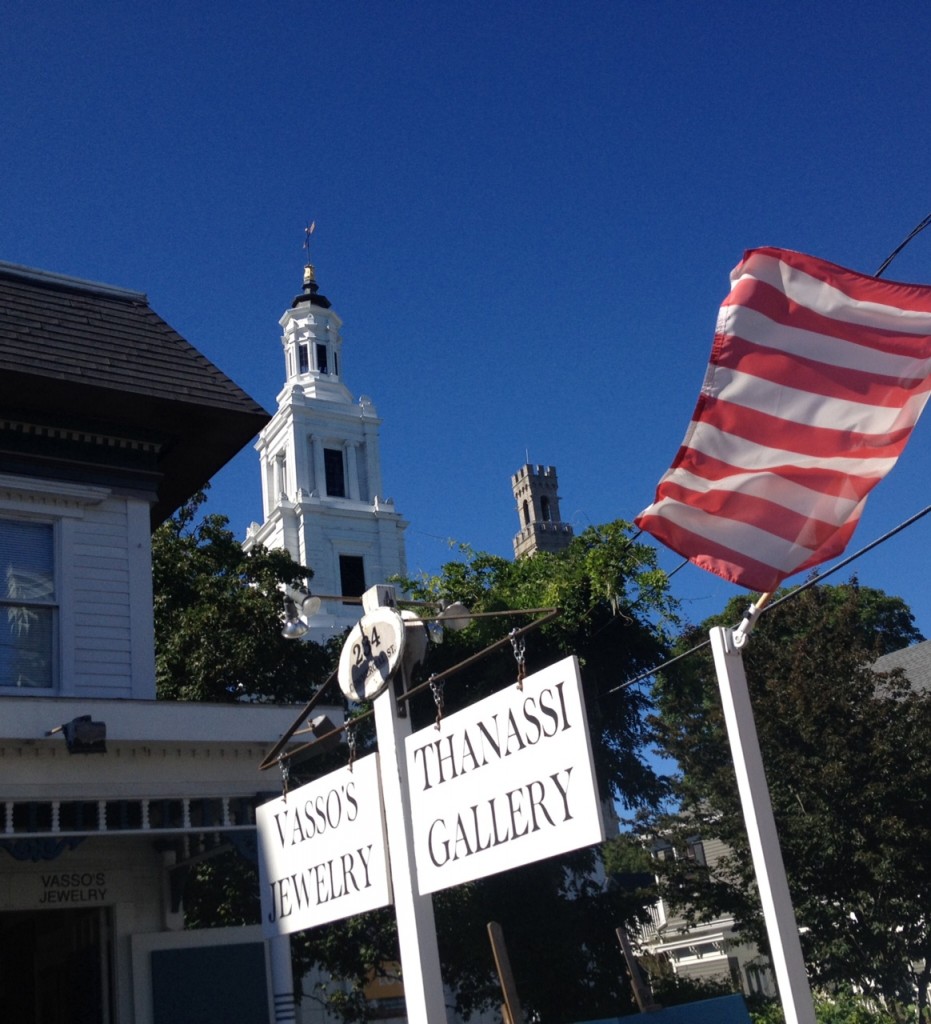
We stayed in Provincetown for a late lunch and some shopping- all in about 3.5 hours. It is such a cool town to hang out in, as there is something for everyone. For boaters, the waters around Provicetown are ideal, as they are so protected in virtually every direction. We headed back around 6:00 PM so that we could be back in familiar Boston Harbor waters by dark, which came around 8:00 PM.
Heading outbound, back around Long Point, passing Wood End and heading East:

Heading out of Provincetown Harbor, one Navigates at first to the South to get around Long Point, and then to the SouthWest to get around Wood End. While on the latter bearing, one can see the Hills of Plymouth, MA directly to the East on most clear days. Last night was so clear that we could also see the big smoke stack from the power plant at Scusset Beach to the South East, and the windmills off Route 3 in Plymouth quite clearly. Soon after, the lookout tower at Brant Rock in Southern Marshfield became visible.
The trip home was awesome. We had much calmer seas than on the way out, and great views. We could see the sun setting behind the Boston Skyline off the bow, and a nearly full moon rising out of a deep purple haze to the stern as we passed Minot Light:
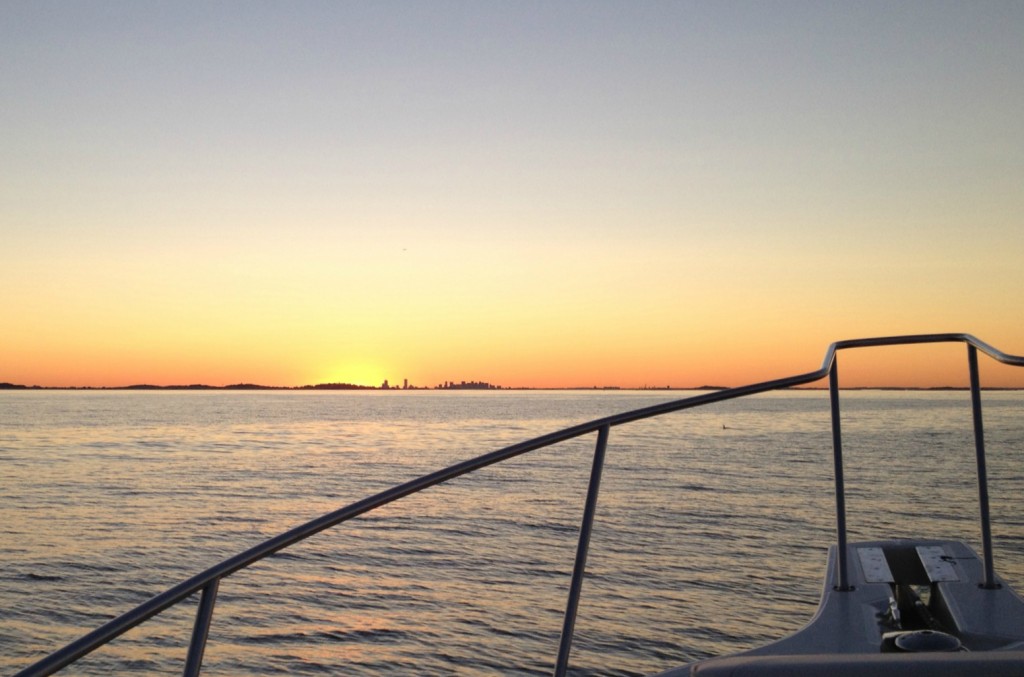
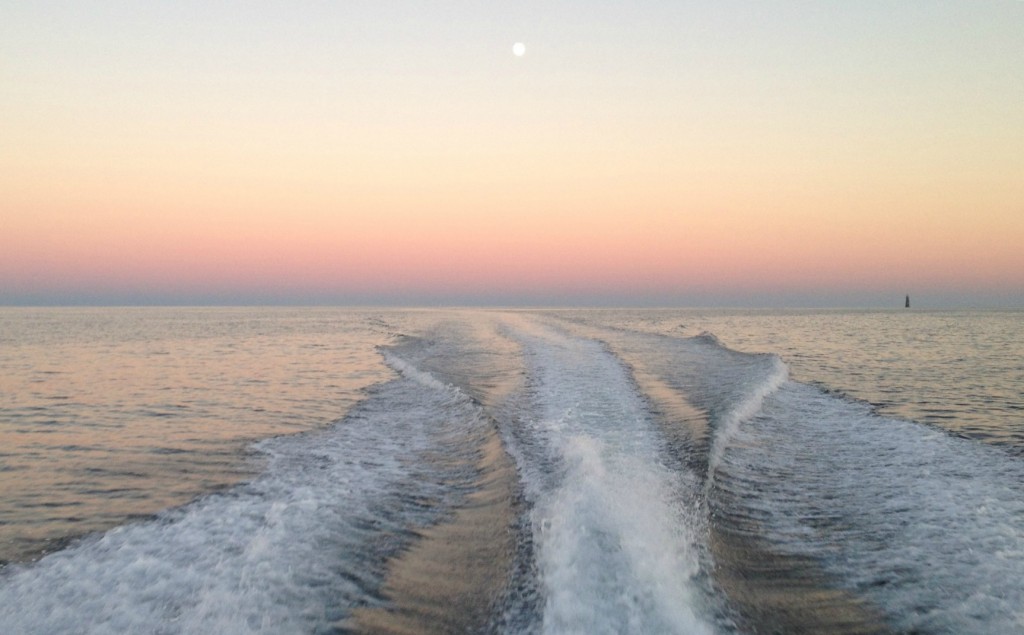
If you are thinking of making this trip, feel free to contact us for any advice or further details that may be helpful. Of course, for folks who don’t have their own boat, there are two companies operating high speed ferry service between Boston and Provincetown. These trips usually take 90 minutes.
Here are some additional photos from last year’s Provincetown Trip:
Last year, I docked at the town pier, instead of sitting on a mooring at Flyers’s. Here was the view of the downtown from the pier in the early morning:
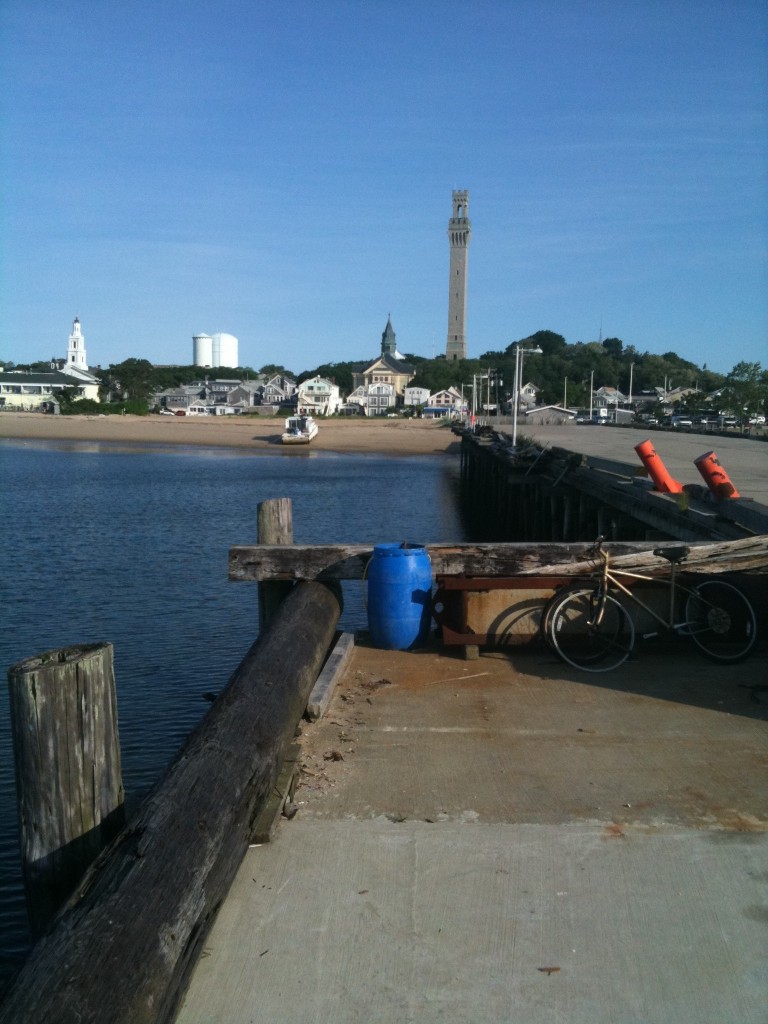
All the boats docked up on a warm Saturday afternoon in mid summer:
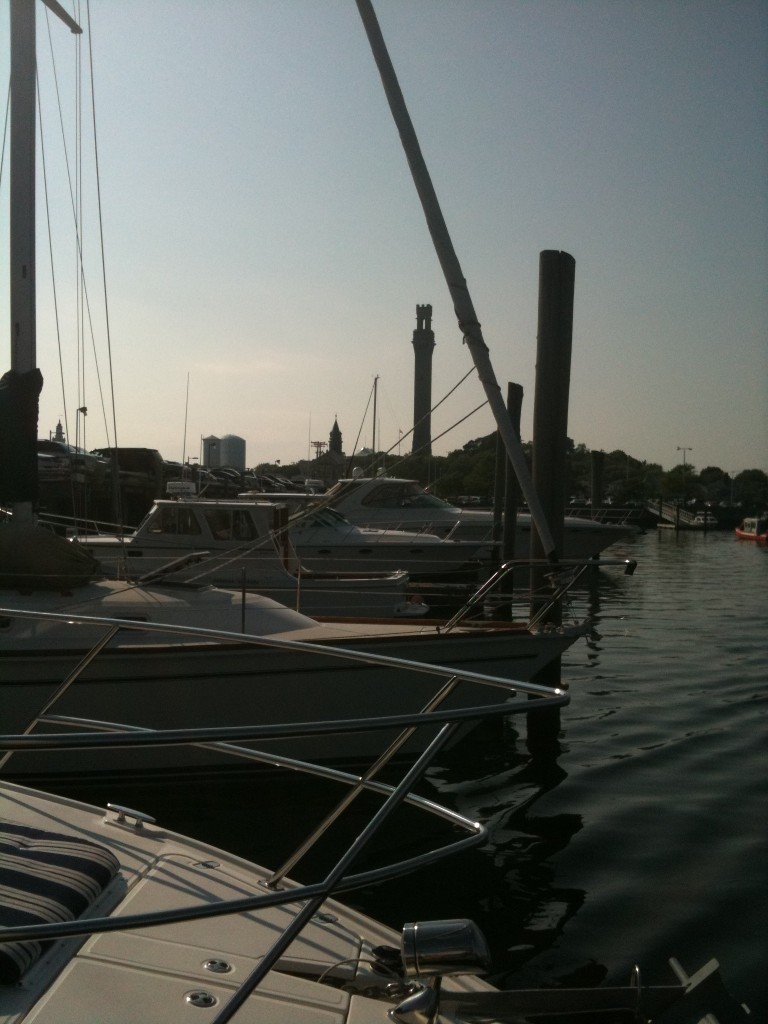
Another view of the town pier, looking across the channel: